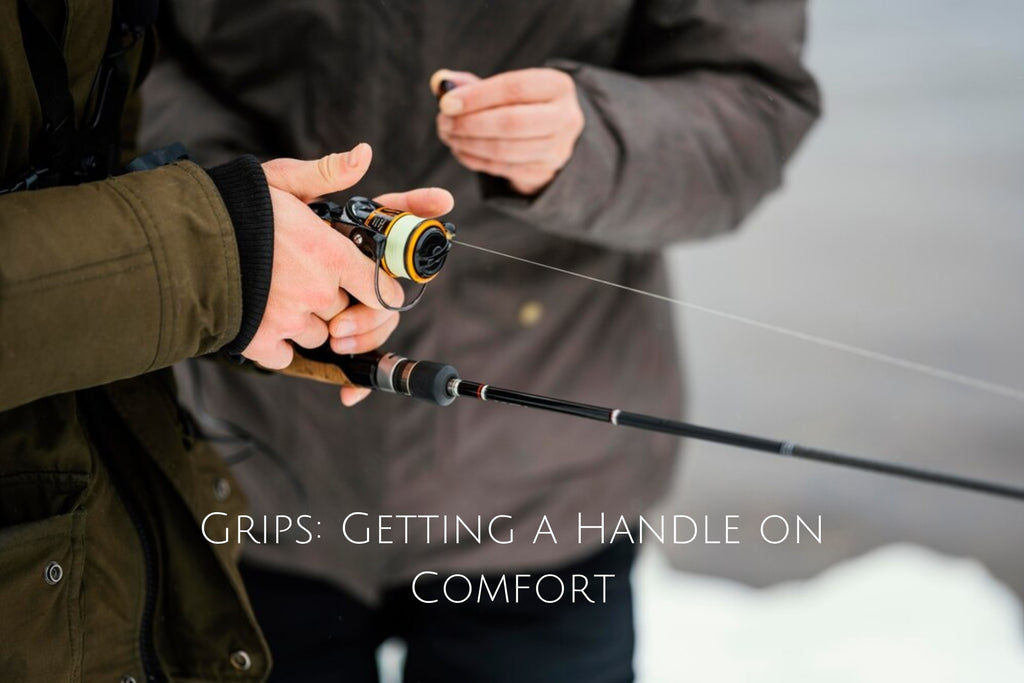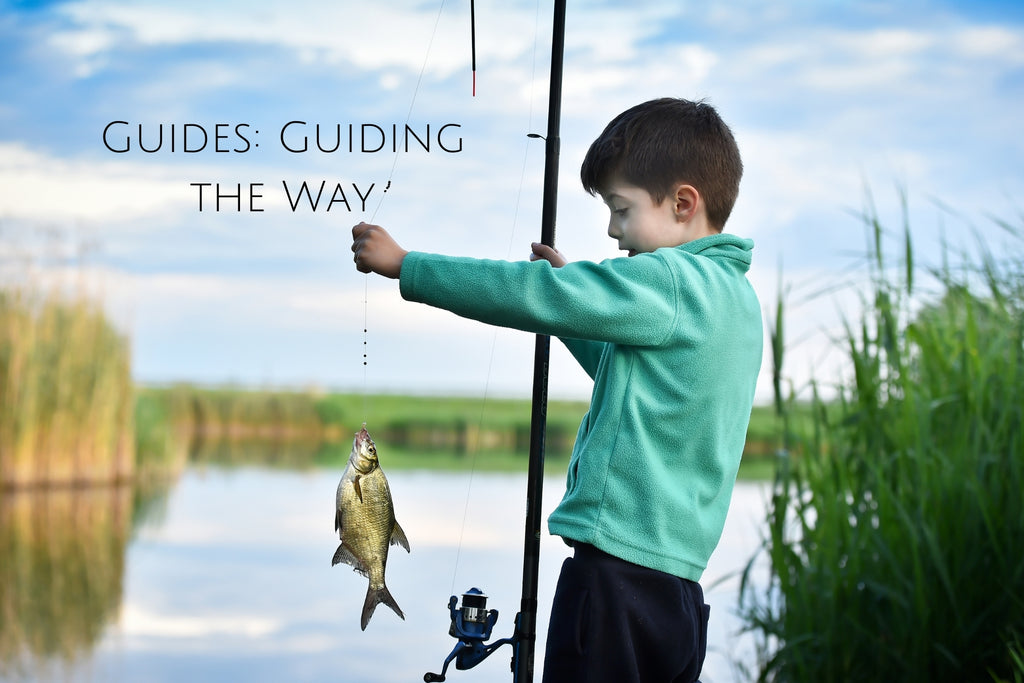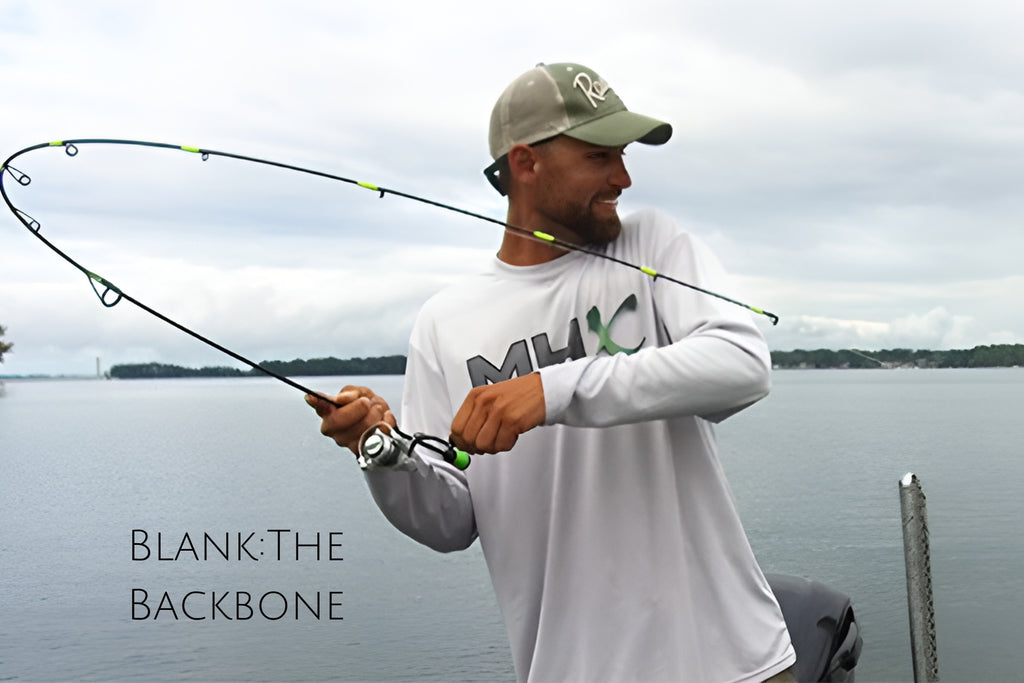
Breaking Down Fishing Rod Components: Grips, Reel Seats, Guides, and Beyond
Introduction:

A fishing rod is more than just a tool; it's an extension of the angler's arm, providing control, sensitivity, and power to reel in the big catch. In this blog, we'll break down the key components of fishing rods, including grips, reel seats, guides, and more, to help you make informed decisions when choosing your next fishing rod. For the aspiring angler, a fishing rod might seem like a simple stick. But beneath the surface lies a symphony of parts working together to cast, control, and land that prize catch. Let's delve into the world of fishing rod components and understand how each piece contributes to a successful fishing experience:
Grips: Getting a Handle on Comfort

- The grip, where your hand makes contact with the rod, is all about comfort and control. Common grip materials include cork, EVA foam, or a combination of both. Consider factors like grip length, shape, and texture when choosing a rod – a comfortable grip can make a world of difference during long fishing sessions.
- Grips, also known as handles or grips, are the part of the fishing rod that the angler holds while casting and reeling. Grips come in various materials, including cork, EVA foam, and rubber, each offering different levels of comfort and grip.
- Cork grips are popular for their lightweight feel, durability, and traditional aesthetic.
- EVA foam grips are comfortable, durable, and easy to clean, making them ideal for saltwater fishing or rough conditions. They provide a soft, cushioned grip that reduces hand fatigue during long fishing sessions.
Reel Seats: The Reel Deal

- The reel seat is the secure connection point for your fishing reel. It should be compatible with your chosen reel size and offer a firm, wobble-free hold. Reel seats come in various styles, from simple screw-down designs to more intricate trigger mechanisms.
- Reel seats are the component of the fishing rod where the reel is mounted. They come in various styles, including spinning reel seats and baitcasting reel seats, each designed to accommodate different types of reels.
- Spinning reel seats typically feature a sliding ring or screw-down mechanism that secures the reel in place. They are compatible with spinning reels, which are popular for their versatility and ease of use.
- Baitcasting reel seats are designed specifically for baitcasting reels, which are favored by experienced anglers for their precision casting and control. Baitcasting reel seats often feature a trigger-style design that provides a secure grip and precise reel placement.
Guides: Guiding the Way

- These lightweight rings with smooth inner linings act as guides for your fishing line. They distribute the line evenly throughout the cast and retrieve, preventing friction and potential breakage. The number, size, and placement of guides all play a role in casting performance and line control.
- Guides, also known as line guides or eyelets, are the small rings mounted along the length of the fishing rod that guide the fishing line from the reel to the tip of the rod. Guides come in various materials, including stainless steel, aluminum oxide, and ceramic.
- Aluminum oxide guides are lightweight and offer smooth line flow, reducing friction and minimizing line wear. They are commonly found on mid-range fishing rods and provide excellent value for money.
- Ceramic guides are the most advanced and expensive option, prized for their smoothness, durability, and heat dissipation properties. They are commonly used on high-end fishing rods designed for tournament fishing or specialized applications.
Blank:The Backbone

- The foundation of your rod is the blank, essentially its main body. It's typically crafted from materials like graphite, fiberglass, or a composite of both. The blank's characteristics, such as length, power (flexibility), and action (tip responsiveness), determine the type of fish and lures it's best suited for.
- The blank is the main body of the fishing rod, typically made from graphite, fiberglass, or a combination of both materials. The blank determines the rod's overall strength, flexibility, and sensitivity.
- Graphite blanks are lightweight, sensitive, and offer excellent strength-to-weight ratio. They are favored by anglers who prioritize sensitivity and responsiveness, such as finesse fishing or light tackle applications.
- Fiberglass blanks are more durable and flexible than graphite blanks, making them ideal for heavy-duty fishing applications or rough conditions. They provide excellent shock absorption and are less prone to breakage than graphite blanks.
The Finishing Touches: Additional Components

- Hook Keeper: A small hook-shaped piece on the blank, often near the reel seat, provides a convenient spot to temporarily secure your hook while rigging your bait or lure.
- Butt Cap: The end piece of the rod handle, typically made of cork or rubber, protects the blank and offers a comfortable point of contact during fighting fish.
- Line Rating: Many rods display a line rating, indicating the recommended weight range of fishing line for optimal performance.
Understanding these components and their functions empowers you to choose the right fishing rod for your specific needs and target species. So, the next time you head out to the water, cast your line with confidence, knowing the intricate workings of your trusty fishing rod.
Conclusion:

Understanding the different components of a fishing rod is essential for selecting the right rod for your fishing needs and preferences. Whether you're targeting bass in freshwater lakes or trolling for tuna in the open ocean, choosing the right grips, reel seats, guides, and blank material can make a significant difference in your fishing experience. So, take the time to familiarize yourself with the various components of fishing rods, and you'll be well-equipped to reel in the big one on your next fishing adventure.
